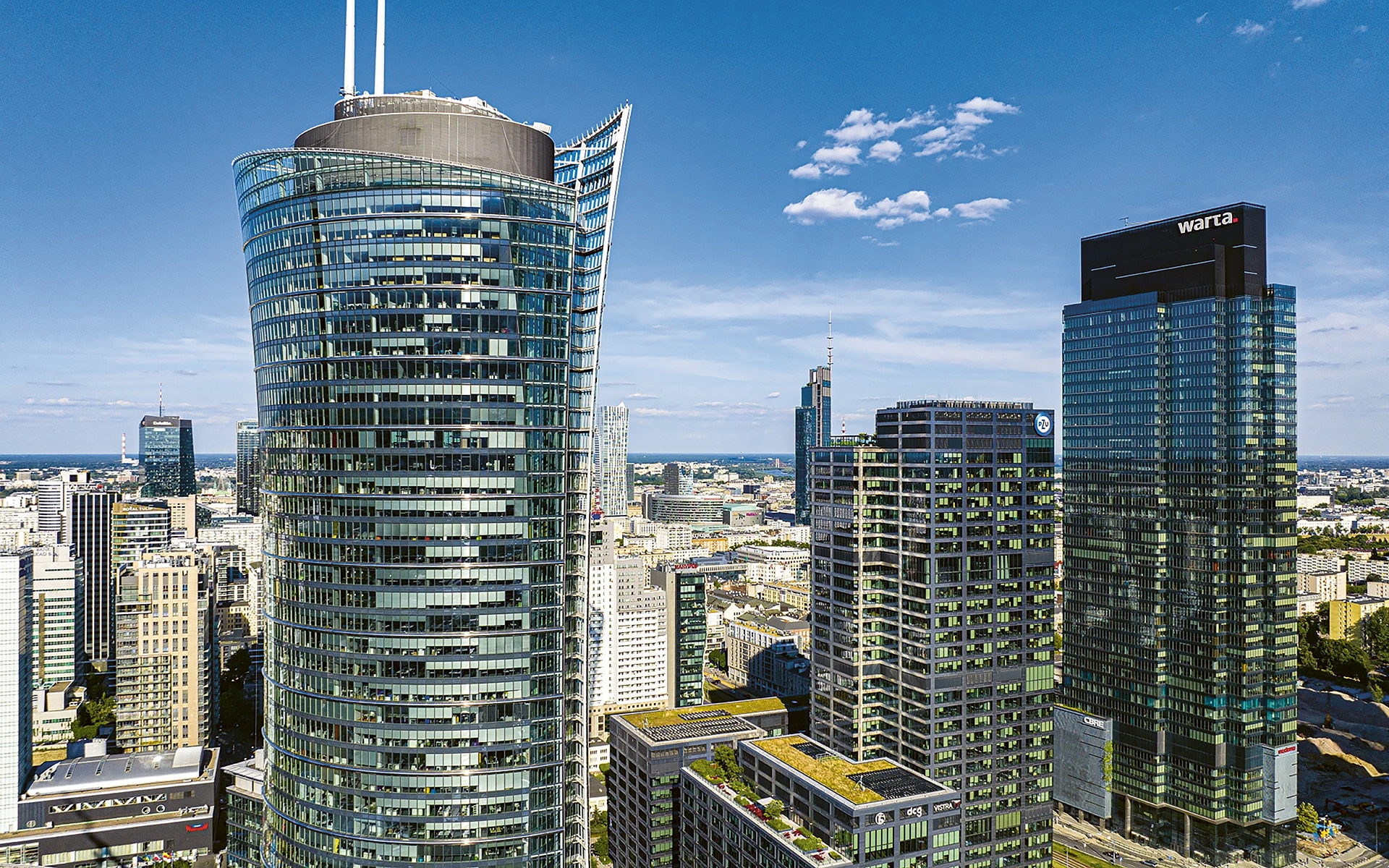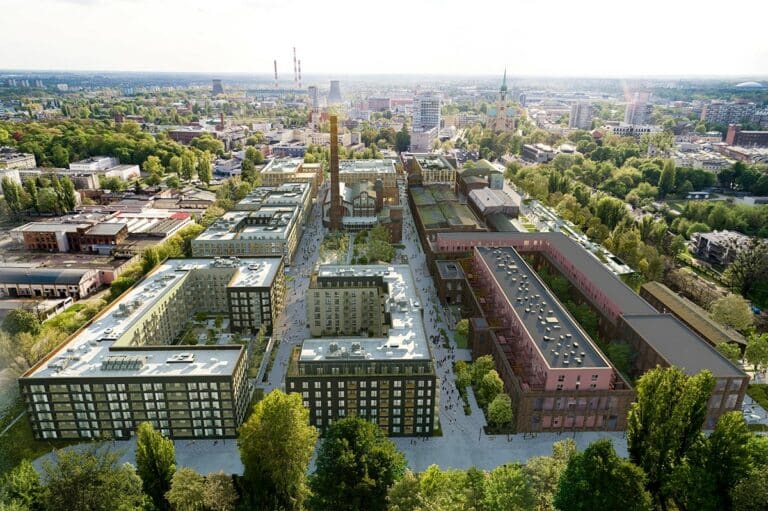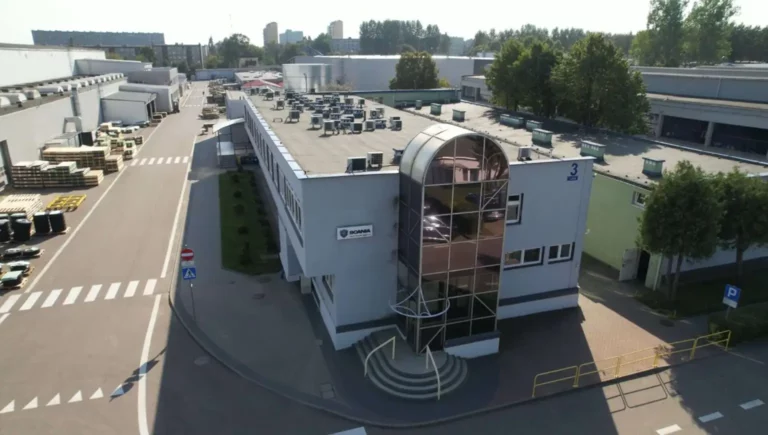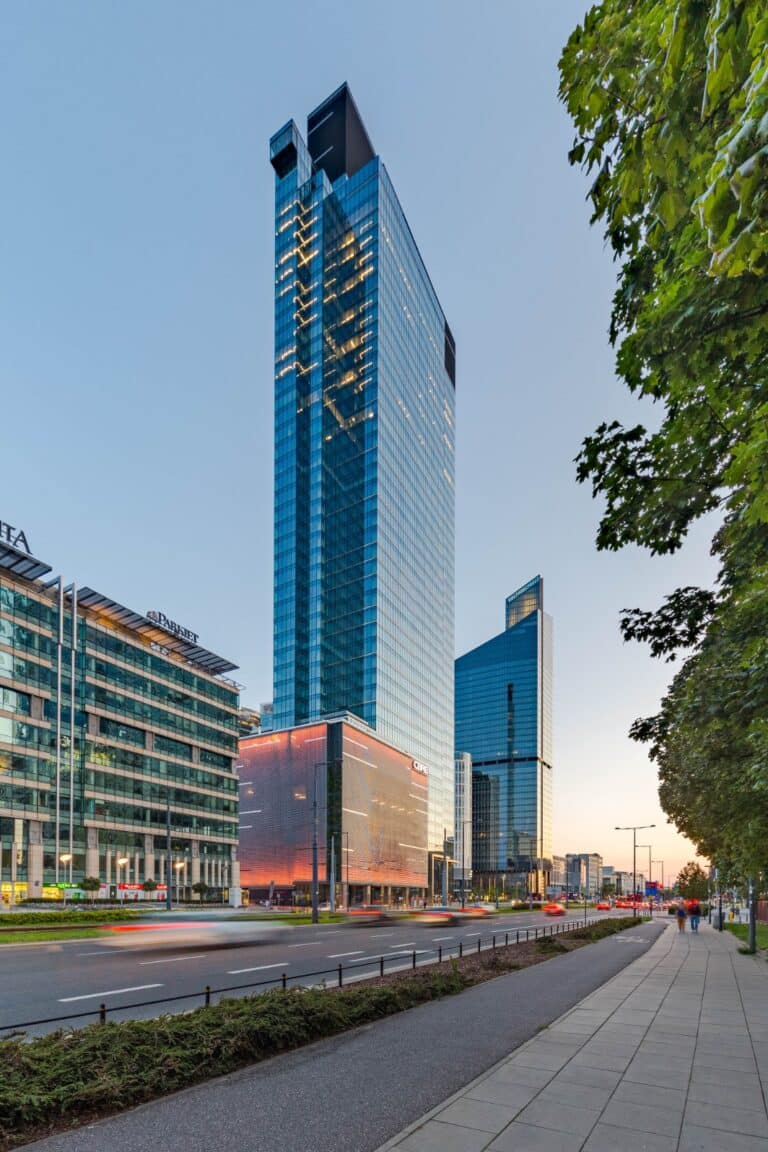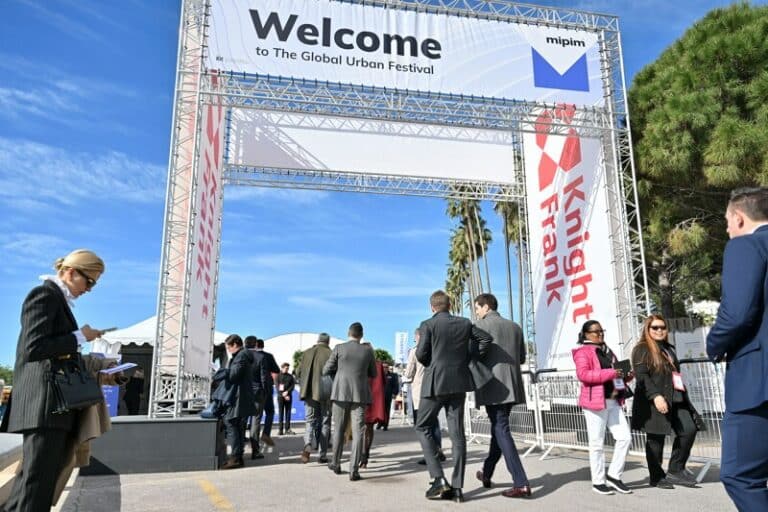Office Market in Warsaw – Q1 2025
In Q1 2025, modern office stock in Warsaw reached 6.28 million sqm. During this period, only one new project was delivered – the CD Projekt headquarters in the East office zone, which added 5,600 sqm to the supply. The total area of office space under construction or renovation amounted to approximately 210,000 sqm. Gross demand reached 160,500 sqm, and the vacancy rate slightly decreased quarter-on-quarter to 10.5%.
The market continues to show moderate but stable development activity – over 130,000 sqm of new office space is planned to be delivered by the end of 2025. Few new investments have been announced for after 2027. The trend of modernizing and repurposing older buildings is becoming increasingly evident.
Demand
The most active areas remained the city center and the Central Business District (CBD), which together accounted for over 60% of total lease volume in the city. The vacancy rate stood at 7.4% in central zones and 13% outside them. The total area of vacant office space in Warsaw was close to 660,000 sqm. The business services sector generated the highest demand – 13% of leased space. Next were the banking, insurance, and investment sectors, as well as manufacturing – each with 10%.
Demand Structure
New lease agreements and pre-lets accounted for 49% of total tenant activity. The next two to three years may bring several large pre-let transactions. Due to the limited number of new speculative projects, pre-let may become the main way to secure space that meets tenant expectations in terms of location, layout, and standard.
Lease Terms
Rents in central locations ranged from EUR 22 to EUR 28/sqm/month, and from EUR 16 to EUR 19.5/sqm/month in non-central areas. Rates for prime spaces on upper floors exceeded EUR 30/sqm/month. Operating costs averaged around PLN 27/sqm/month.
Landlords’ Market
Market conditions are increasingly favorable to building owners. Contracts for longer terms are becoming more common – seven-year agreements are becoming the new standard. After years of tenant dominance, the balance of power is shifting. It is now more difficult to meet overly ambitious negotiation demands, and the limited supply is putting upward pressure on rental rates, strengthening landlords’ positions. This is a natural part of the market cycle but presents new challenges for tenants.
Timing Matters
For large companies, starting lease negotiations earlier – even two to three years before the current lease expires – is becoming essential for securing the best options. Smaller firms, on the other hand, can gain an edge by streamlining decision-making processes, enabling them to respond faster to emerging opportunities. Experiences from recent years show that delayed decisions can unnecessarily prolong the entire leasing process, which is why flexibility and swift action are critical in securing the right space.
What’s Next?
As the cost of adapting space to tenant needs rises, the length of lease agreements is also increasing. Seven-year contracts are already standard in new buildings, while existing properties typically require at least five-year agreements. Short-term leases, such as three-year deals, are becoming increasingly rare.
In the near future, an increase in operating costs is also expected due to indexation – using office space will become more expensive. At the same time, renegotiations will account for a growing share of the annual transaction volume.

